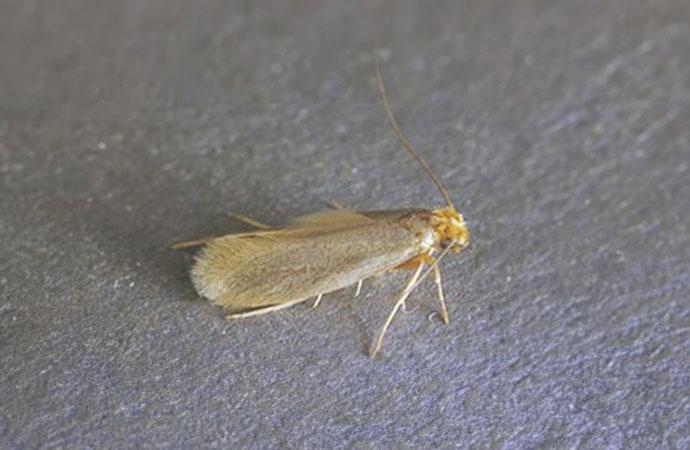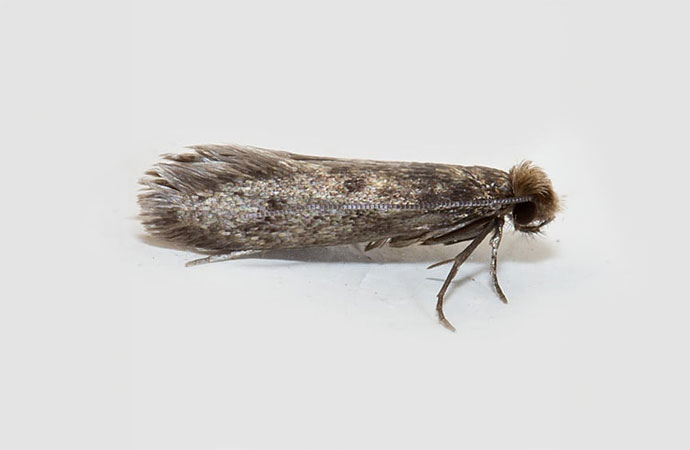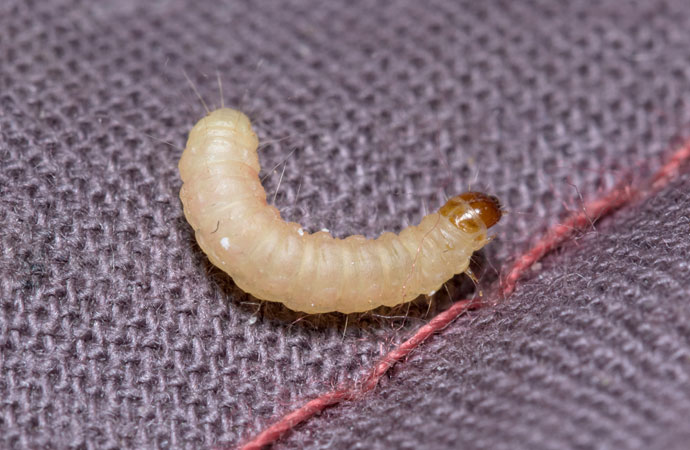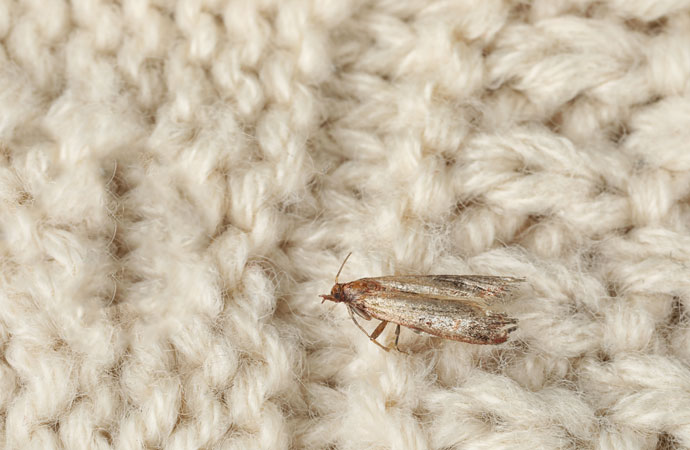The Webbing Moth
This bug at maturity is a yellowish beige and just less than a half inch in size.
A durable, well-maintained, woven wool rug can last for more than a century. Too often, these heirlooms arrive at cleaning facilities with unsightly moth damage. These intricate textiles woven to last for decades can be severely damaged by an insect in a matter of weeks or months.
Steam Sweepers Rug Cleaning will apply moth-repellent rug restoration for rugs vulnerable to moth damage in Bellingham, Mount Vernon, Stanwood, Oak Harbor, and other cities within our Northwestern Washington service area. Typically, two distinct types of indigenous moths are especially dangerous to your fine textiles: the Webbing Moth and the Casemaking Moth.
In both cases, the larvae cause the damage. The adults typically lay up to 150 eggs and depart, leaving the larvae to feed on your Persian or silk rug as they grow. The larva’s feeding cycle can last up to 30 months. In a matter of weeks, the infestation can cause rug damage the size of a dinner plate! Call us today at 360-762-3020 for a free estimate from one of our rug moth repellent experts. You can also click here to schedule services online.
For moth prevention, consider the following preventive steps:

This bug at maturity is a yellowish beige and just less than a half inch in size.

Again, about a half inch in size or less, more brownish in color and shaped like a fighter jet.

At Steam Sweepers Rug Cleaning, we know the value and beauty of rugs. Our comprehensive rug moth protection and repellent options safeguard your rugs from the perils of pests. That and more protection include:

When you notice a moth infestation impacting your area rug, don't delay; contact Steam Sweepers for rug moth protection services in Bellingham, Mount Vernon, Stanwood, Oak Harbor, and other cities throughout our Washington service area. Call us today at 360-762-3020 for a free estimate about rug restoration services, including the application of a moth repellent for your rug. You can also click here to book an appointment online.